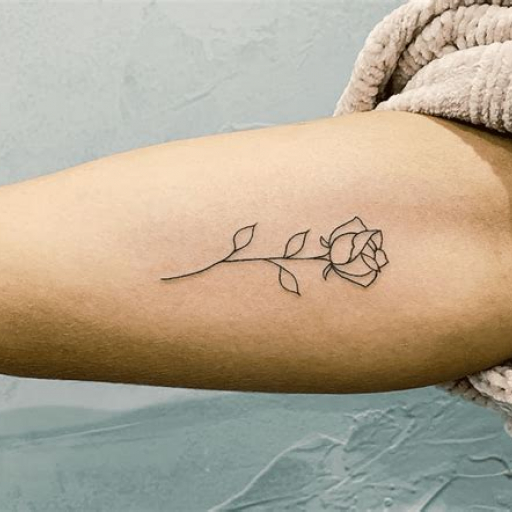Fine line tattoos are becoming increasingly popular, known for their delicate and intricate designs. However, many wonder if they are a bad idea. In this article, we will explore the potential disadvantages and considerations associated with fine line tattoos to assist you in making an informed decision.
Disadvantages of Fine Line Tattoos
Fading and Blurring: Fine line tattoos tend to fade and blur over time due to their thin lines. This is especially true in areas with frequent movement or exposure to sunlight. Regular touch-ups may be necessary to maintain the desired appearance.

Lack of Detail: The delicate nature of fine line tattoos limits the artist’s ability to incorporate intricate details. This may not be suitable if you envision a highly detailed or realistic design.
Aging Concerns: As we age, our skin naturally loses elasticity and becomes thinner. This can cause fine line tattoos to become distorted or less noticeable over time.
Cover-up Challenges: If you decide to cover up a fine line tattoo in the future, it can be more challenging due to its thin, intricate nature. The original tattoo lines may still be visible through the new tattoo.
Considerations for Fine Line Tattoos
Placement: Choose a placement that is less prone to movement or excessive stretching. This will help preserve the appearance of your tattoo.
Aftercare: Proper aftercare is crucial for the longevity of any tattoo, including fine line ones. Follow the artist’s instructions carefully to prevent fading or blurring.
Artist Experience: Select a reputable tattoo artist experienced in fine line tattoos. Their expertise will ensure that the lines are precise and the design is executed with skill.
Lifestyle Factors: Consider your lifestyle and daily activities. If you engage in strenuous physical activity, a fine line tattoo may not be the best choice due to potential fading.
Emotional Readiness: Fine line tattoos are permanent, so it’s essential to be emotionally ready for this commitment. Carefully consider the design and placement to avoid future regrets.
Conclusion
Whether or not fine line tattoos are a bad idea depends on individual preferences and circumstances. They offer aesthetic appeal but come with potential challenges such as fading, limited detail, and cover-up difficulties. By carefully considering the disadvantages and implementing proper aftercare, you can increase the longevity and satisfaction with your fine line tattoo.
Ultimately, the decision is personal and should be made after thorough research and consultation with a reputable tattoo artist. Remember, tattoos are permanent, so it’s essential to approach them thoughtfully.
FAQs
Are fine line tattoos more painful?
Not necessarily. Pain perception varies, but generally, fine line tattoos are no more painful than traditional tattoos.
How do I prevent fading in fine line tattoos?
Proper aftercare, avoiding excessive sun exposure, and choosing a placement that minimizes stretching will help preserve the appearance of your tattoo.
Can I cover up a fine line tattoo?
Covering up fine line tattoos can be challenging, but it is possible with a larger, darker tattoo executed by an experienced artist.
Are fine line tattoos good for beginners?
Fine line tattoos can be more challenging to achieve, so they may not be the best choice for beginners. Consider traditional or bold line tattoos for your first ink experience.
How long do fine line tattoos last?
With proper aftercare and minimal fading, fine line tattoos can last for many years. However, touch-ups may be necessary over time to maintain their appearance.



